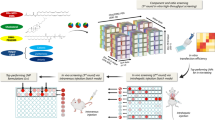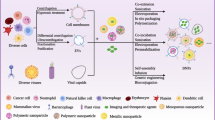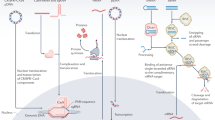Abstract
Among viruses, lentiviral vectors have been popular vectors for gene delivery due to their efficient mode of gene delivery. However, the nonspecific delivery of genes associated with lentiviral vectors may result in undesirable side effects. Here we propose a heterogeneous nanoparticle (NP) delivery system for targeted delivery of lentiviral particles containing a therapeutic gene. The heterogeneous NPs consist of the low-density lipoprotein receptor repeat 3 (LDLR3) and the keratinocyte growth factor (KGF), each fused to elastin-like polypeptides (ELPs), LDLR3-ELP and KGF-ELP, respectively. Our results show that although homogeneous NPs comprising of LDLR3-ELP alone blocked viral transduction, heterogeneous NPs comprising of KGF-ELP and LDLR3-ELP enhanced viral transduction in cells expressing high levels of the KGF receptors compared with cells expressing low levels of KGF receptors. Overall, this novel design may help with the targeting of specific cells that overexpress growth factor receptors such as KGF receptors.
This is a preview of subscription content, access via your institution
Access options
Subscribe to this journal
Receive 12 print issues and online access
$259.00 per year
only $21.58 per issue
Buy this article
- Purchase on Springer Link
- Instant access to full article PDF
Prices may be subject to local taxes which are calculated during checkout










Similar content being viewed by others
References
Nishida K, Smith Z, Rana D, Palmer J, Gallicano GI . Cystic fibrosis: a look into the future of prenatal screening and therapy. Birth Defects Res 2015; 105: 73–80.
Maude SL, Frey N, Shaw PA, Aplenc R, Barrett DM, Bunin NJ et al. Chimeric antigen receptor T cells for sustained remissions in leukemia. N Engl J Med 2014; 371: 1507–1517.
Bartus RT, Weinberg MS, Samulski RJ . Parkinson’s disease gene therapy: success by design meets failure by efficacy. Mol Ther 2014; 22: 487–497.
Wu JX, Liu S-H, Nemunaitis JJ, Brunicardi FC . Liposomal insulin promoter–thymidine kinase gene therapy followed by ganciclovir effectively ablates human pancreatic cancer in mice. Cancer Lett 2015; 359: 206–210.
Ko NR, Cheong J, Noronha A, Wilds CJ, Oh JK . Reductively-sheddable cationic nanocarriers for dual chemotherapy and gene therapy with enhanced release. Colloids Surf B: Biointerfaces 2015; 126: 178–187.
Kraynyak K, Bodles-Brakhop A, Bagarazzi M Tapping the potential of DNA delivery with electroporation for cancer immunotherapyCurrent Topics in Microbiology and Immunology. Springer: Berlin Heidelberg, 2015, p 1–24.
Cai M, Yang Y . Targeted genome editing tools for disease modeling and gene therapy. Current Gene Ther 2014; 14: 2–9.
Nasirinezhad F, Gajavelli S, Priddy B, Jergova S, Zadina J, Sagen J . Viral vectors encoding endomorphins and serine histogranin attenuate neuropathic pain symptoms after spinal cord injury in rats. Mol Pain 2015; 11: 2.
Shearer RF, Saunders DN . Experimental design for stable genetic manipulation in mammalian cell lines: lentivirus and alternatives. Genes Cells 2015; 20: 1–10.
Frimpong K, Spector SA . Cotransduction of nondividing cells using lentiviral vectors. Gene Ther 2000; 7: 1562–1569.
Beignon AS, Mollier K, Liard C, Coutant F, Munier S, Riviere J et al. Lentiviral vector-based prime/boost vaccination against AIDS: pilot study shows protection against Simian immunodeficiency virus SIVmac251 challenge in macaques. J Virol 2009; 83: 10963–10974.
Scaramuzza S, Biasco L, Ripamonti A, Castiello MC, Loperfido M, Draghici E et al. Preclinical safety and efficacy of human CD34+ cells transduced with lentiviral vector for the treatment of Wiskott-Aldrich syndrome. Mol Ther 2013; 21: 175–184.
Craigie R, Bushman FD . HIV DNA integration. Cold Spring Harb Perspect Med 2012; 2: a006890.
Cesani M, Plati T, Lorioli L, Benedicenti F, Redaelli D, Dionisio F et al. Shedding of clinical-grade lentiviral vectors is not detected in a gene therapy setting. Gene Ther 2015; 22: 496–502.
Baum C, Dullmann J, Li Z, Fehse B, Meyer J, Williams DA et al. Side effects of retroviral gene transfer into hematopoietic stem cells. Blood 2003; 101: 2099–2114.
Das SK, Menezes ME, Bhatia S, Wang X-Y, Emdad L, Sarkar D et al. Gene therapies for cancer: strategies, challenges and successes. J Cell Physiol 2015; 230: 259–271.
Lichty BD, Power AT, Stojdl DF, Bell JC . Vesicular stomatitis virus: re-inventing the bullet. Trends Mol Med 2004; 10: 210–216.
Ge P, Tsao J, Schein S, Green TJ, Luo M, Zhou ZH . Cryo-EM model of the bullet-shaped vesicular stomatitis virus. Science 2010; 327: 689–693.
Cronin J, Zhang XY, Reiser J . Altering the tropism of lentiviral vectors through pseudotyping. Cuee Gene Ther 2005; 5: 387–398.
Finkelshtein D, Werman A, Novick D, Barak S, Rubinstein M . LDL receptor and its family members serve as the cellular receptors for vesicular stomatitis virus. Proc Natl Acad Sci USA 2013; 110: 7306–7311.
Han S, Mahato RI, Sung YK, Kim SW . Development of biomaterials for gene therapy. Mol Ther 2000; 2: 302–317.
Kowalczyk T, Hnatuszko-Konka K, Gerszberg A, Kononowicz AK . Elastin-like polypeptides as a promising family of genetically-engineered protein based polymers. World J Microbiol Biotechnol 2014; 30: 2141–2152.
Rodriguez-Cabello JC, Arias FJ, Rodrigo MA, Girotti A . Elastin-like polypeptides in drug delivery. Adv Drug Deliv Rev 2016; 97: 85–100.
Kim JS, Chu HS, Park KI, Won JI, Jang JH . Elastin-like polypeptide matrices for enhancing adeno-associated virus-mediated gene delivery to human neural stem cells. Gene Ther 2012; 19: 329–337.
Dreher MR, Raucher D, Balu N, Michael Colvin O, Ludeman SM, Chilkoti A . Evaluation of an elastin-like polypeptide-doxorubicin conjugate for cancer therapy. J Control Release 2003; 91: 31–43.
Bidwell GL 3rd, Fokt I, Priebe W, Raucher D . Development of elastin-like polypeptide for thermally targeted delivery of doxorubicin. Biochem Pharmacol 2007; 73: 620–631.
Koria P, Yagi H, Kitagawa Y, Megeed Z, Nahmias Y, Sheridan R et al. Self-assembling elastin-like peptides growth factor chimeric nanoparticles for the treatment of chronic wounds. Proc Natl Acad Sci USA 2011; 108: 1034–1039.
Trabbic-Carlson K, Meyer DE, Liu L, Piervincenzi R, Nath N, LaBean T et al. Effect of protein fusion on the transition temperature of an environmentally responsive elastin-like polypeptide: a role for surface hydrophobicity? Protein Eng Design Select 2004; 17: 57–66.
Urry DW . Physical chemistry of biological free energy transduction as demonstrated by elastic protein-based polymers. J Phys Chem B 1997; 101: 11007–11028.
Meyer DE, Chilkoti A . Purification of recombinant proteins by fusion with thermally-responsive polypeptides. Nat Biotechnol 1999; 17: 1112–1115.
McCarthy B, Yuan Y, Koria P . Elastin-like-polypeptide based fusion proteins for osteogenic factor delivery in bone healing. Biotechnol Progr 2016; 32: 1029–1037.
Johnson T, Koria P . Expression and purification of neurotrophin-elastin-like peptide fusion proteins for neural regeneration. BioDrugs 2016; 30: 117–127.
Iglesias R, Koria P . Leveraging growth factor induced macropinocytosis for targeted treatment of lung cancer. Med Oncol (Northwood, Lond, Engl) 2015; 32: 259.
Lopes CD, Goncalves NP, Gomes CP, Saraiva MJ, Pego AP . BDNF gene delivery mediated by neuron-targeted nanoparticles is neuroprotective in peripheral nerve injury. Biomaterials 2017; 121: 83–96.
Chen Y, Xu M, Guo Y, Tu K, Wu W, Wang J et al. Targeted chimera delivery to ovarian cancer cells by heterogeneous gold magnetic nanoparticle. Nanotechnology 2017; 28: 025101.
Chorny M, Fishbein I, Tengood JE, Adamo RF, Alferiev IS, Levy RJ . Site-specific gene delivery to stented arteries using magnetically guided zinc oleate-based nanoparticles loaded with adenoviral vectors. FASEB J 2013; 27: 2198–2206.
Wenzel D, Rieck S, Vosen S, Mykhaylyk O, Trueck C, Eberbeck D et al. Identification of magnetic nanoparticles for combined positioning and lentiviral transduction of endothelial cells. Pharm Res 2012; 29: 1242–1254.
Choi JW, Park JW, Na Y, Jung SJ, Hwang JK, Choi D et al. Using a magnetic field to redirect an oncolytic adenovirus complexed with iron oxide augments gene therapy efficacy. Biomaterials 2015; 65: 163–174.
Meyer DE, Chilkoti A . Genetically encoded synthesis of protein-based polymers with precisely specified molecular weight and sequence by recursive directional ligation: examples from the elastin-like polypeptide system. Biomacromolecules 2002; 3: 357–367.
Acknowledgements
This work was funded in part by NIH grant R21AR068013 (PK) and by Institutional Research Grant number 93-032-16 from the American Cancer Society (PK). We thank Dr Haura for kindly donating A549, H1650, H23 and H292 cells.
Author information
Authors and Affiliations
Corresponding author
Ethics declarations
Competing interests
The authors declare no conflict of interest.
Rights and permissions
About this article
Cite this article
Monfort, D., Koria, P. Recombinant elastin-based nanoparticles for targeted gene therapy. Gene Ther 24, 610–620 (2017). https://doi.org/10.1038/gt.2017.54
Received:
Revised:
Accepted:
Published:
Issue Date:
DOI: https://doi.org/10.1038/gt.2017.54



